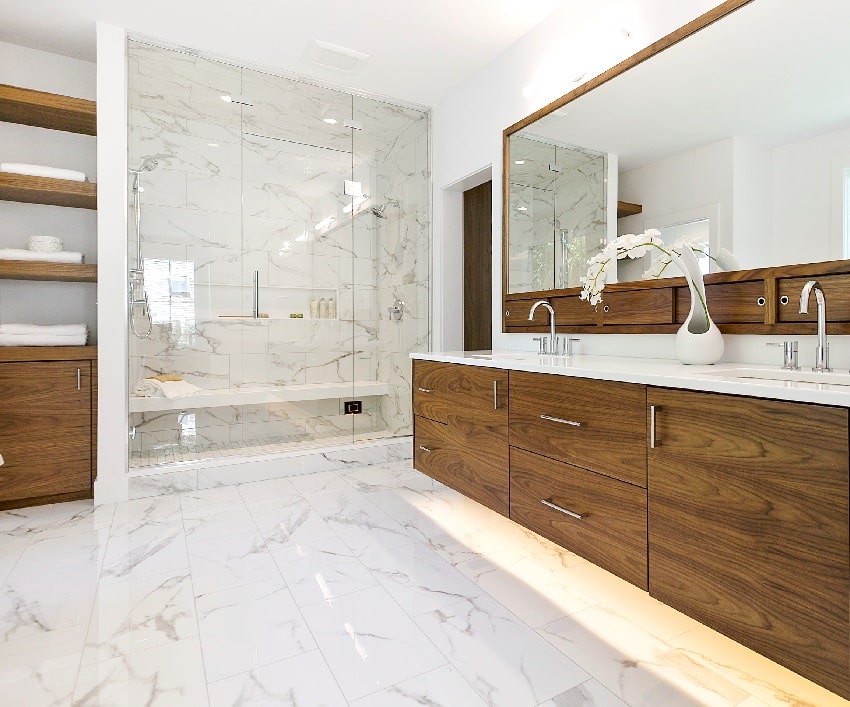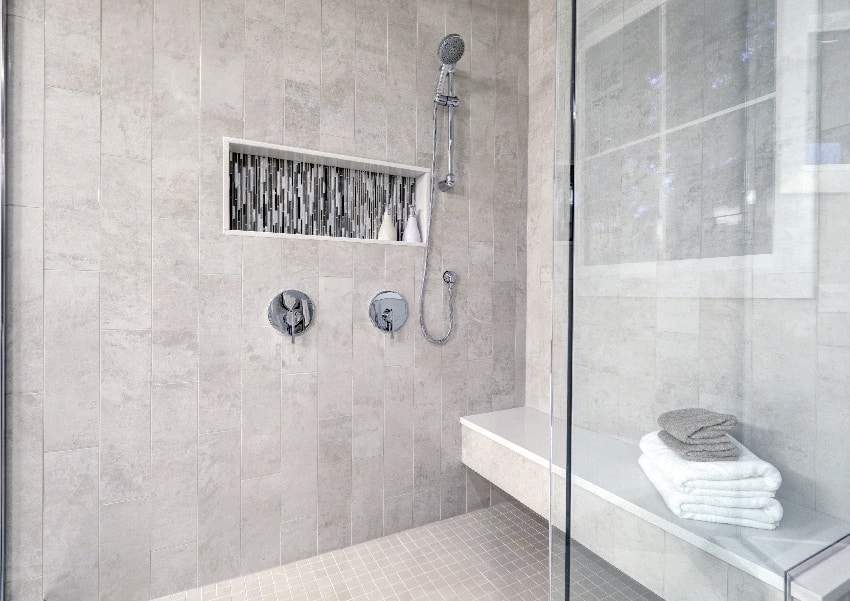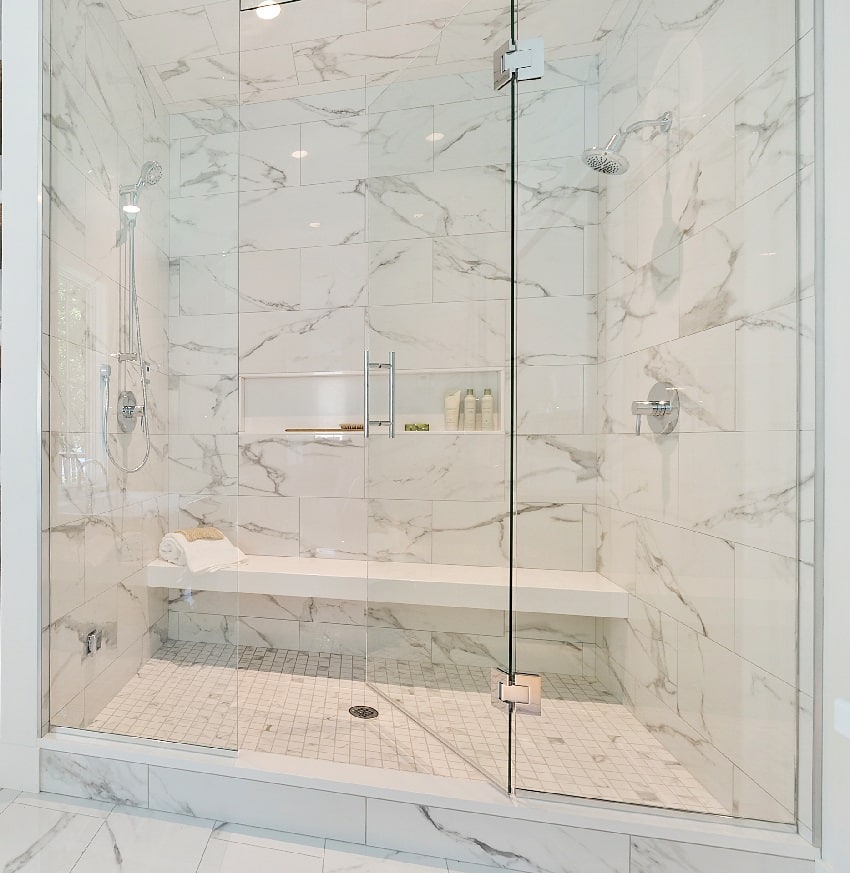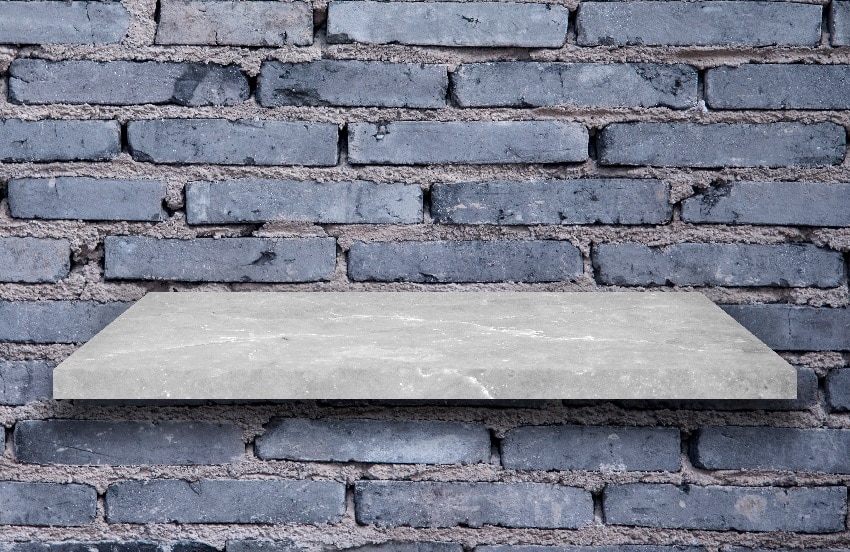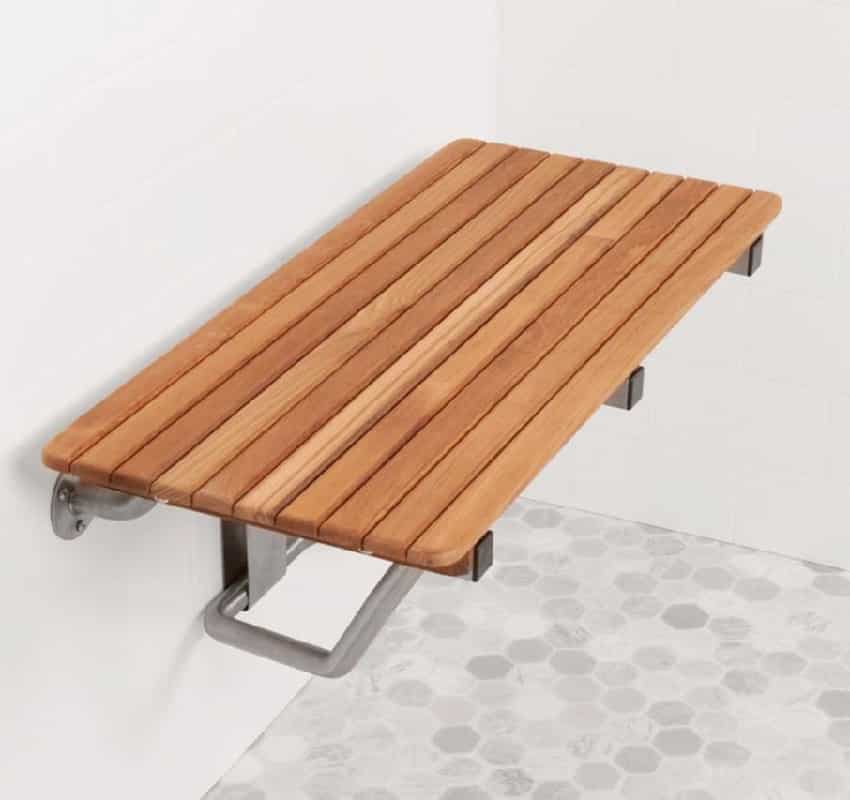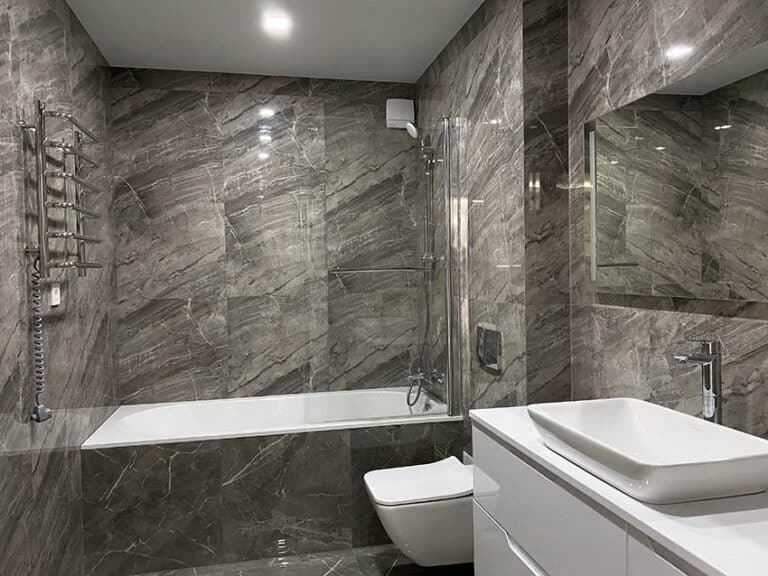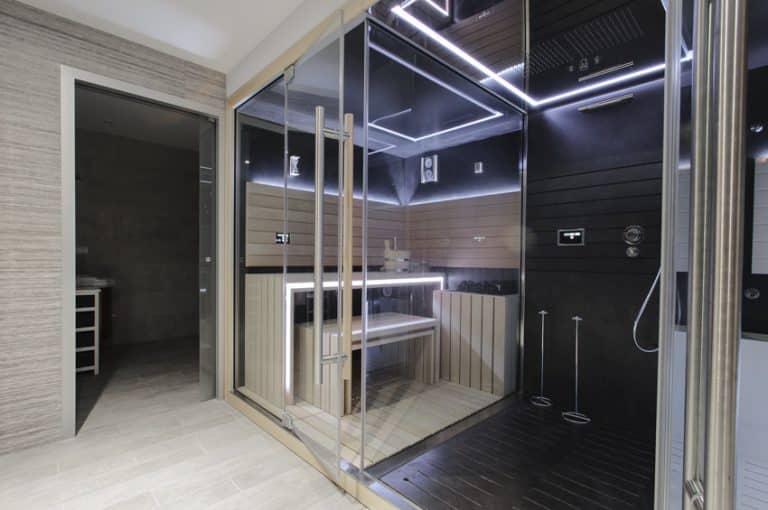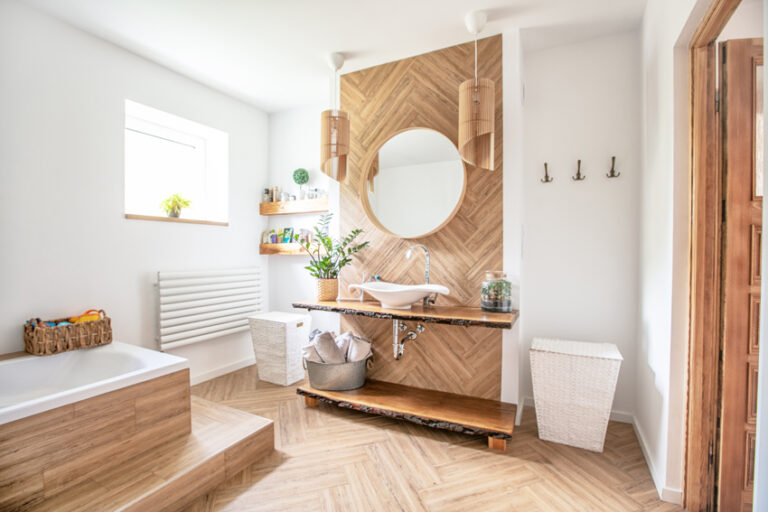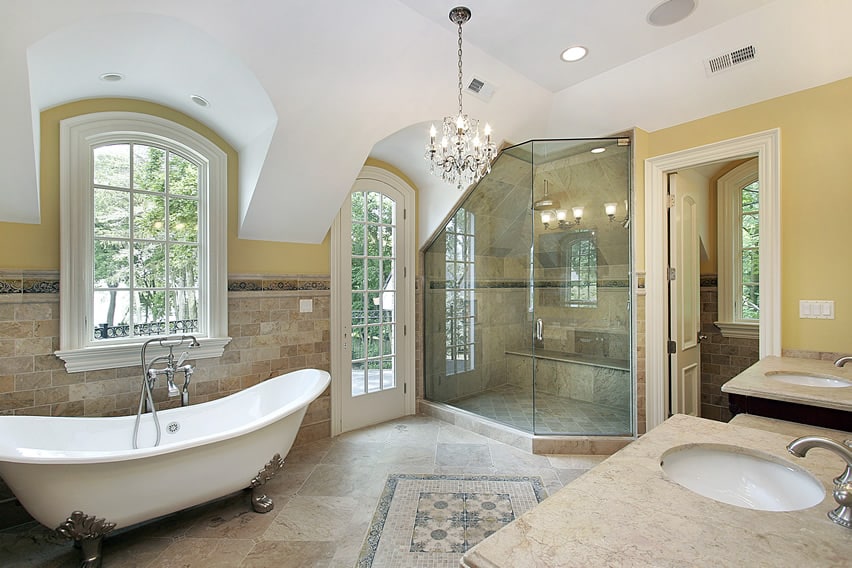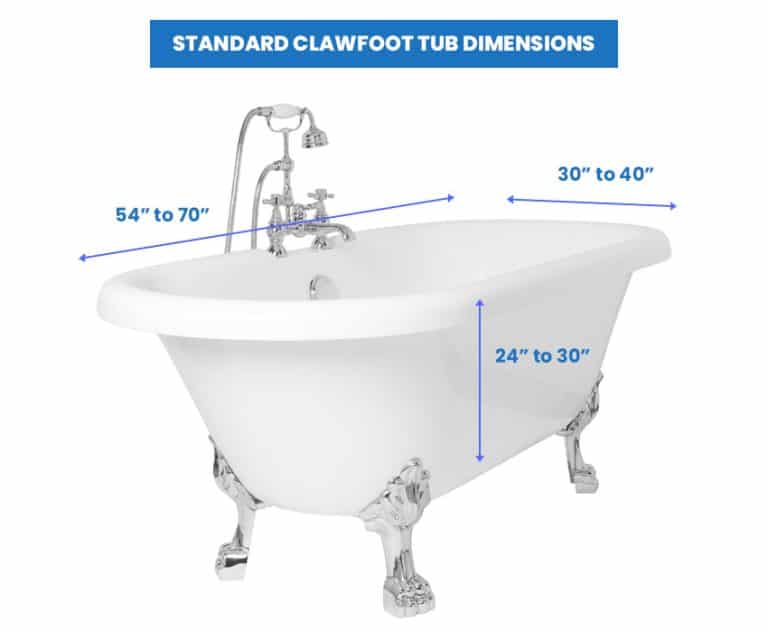Floating Shower Bench (Design Guide)
Here I take a look at floating shower bench designs, including their cost, materials, and the right dimensions to make the best aesthetic and long-lasting seat.
New home designers and homeowners are increasingly adding and installing bathroom shower benches. Many people prefer the older form of a box-style bench because they require a solid foundation to support weight.
Did you know you can make a floating shower bench with the same strength? Shower benches allow individuals to sit and relax while washing, and they may be permanently installed or movable.
What Is A Floating Bench?
A floating shower bench is attached to the wall at seat height but has no legs or support below it, creating a suspended appearance.
When not in use, these benches may be permanently installed in the sitting position, or some floating seats feature hinges that allow them to be folded up against the wall. It provides a stylish, streamlined appearance while maintaining the same strength as a box-style shower seat.
It improves the looks of your bathroom while providing a spa-like experience to help you relax—all of this, plus EXTRA storage space.
Let’s consider why you should consider getting a shower seat, and when choosing a material for your seat, I’ll keep the following in mind: Budget, aesthetics, and maintenance.
Space Management and Storage
If you have a small bathroom but still want to incorporate a seat, the floating shower bench is ideal since it does not take up more space. Floating benches feature storage beneath them that you may utilize to tidy your area.
Under the seat, you can store small cosmetic goods, like shampoo bottles, shower gel, and scrubs. It is an excellent place to store wheelchairs if constructed at the proper height. It also provides extra legroom and keeps you comfy while you sit in your bathroom shower.
Seat Design
If you get creative with your ideas, floating shower seats offer a different feel and appearance to your bathroom area. The kind of material utilized for the surface may also influence the design.
You might coordinate the look of the seat design with other bathroom items, decor, and finishes to make it seem more cohesive, such as a matching wooden frame mirror or a marble soap dispenser.
There are also swing-down adjustable designs available that offer more functionality. Their folding mechanism offers a greater variety of height and accessibility for different users at the expense of durability and aesthetics.
Easy Installation
These benches may be added to an existing bathroom at anytime and will not detract from the overall design. Floating benches are not intended to be incorporated like built-in benches and may instead be screwed into place using the appropriate tools.
Floating Shower Bench Dimensions
The size of your shower bench will be determined by the size of your bathroom and the number of people using it. It should be wide enough to be able to sit comfortably without overwhelming the shower space.
The Americans with Disabilities Act (ADA) proposed a minimum height of 17 inches (430 mm) and a maximum height of 19 inches (485 mm). Read more about standard shower sizes here.
How Deep Should a Floating Bench Be?
The depth should not be more than 15-16 inches, but it should not be so deep that standing is difficult. The amount of space available should determine the length. The basic guideline is that users should feel at ease when sitting on the seat.
How Much Weight Can a Suspended Bench Hold?
The typical weight capacity of a bench is 200 to 500 pounds, while floating benches must support at least 400 pounds.
Shower Wall-Mounted Bench Cost
How much does a floating shower bench cost to install? It all depends on how you go about doing it. For a full-sized sit-down product, floating shower bench kits will cost about $300 to $400.
In most regions, the price of hiring a professional to install it will range from $50 to $100 per hour.
To have a custom floating seat adequately built, you should budget at least $1000. The cost of tearing down sections of your wall may be as much as $1000. Custom benches for walk-in showers are much more expensive.
Shower Built-in Corner Bench
If you are considering installing a corner shower bench, a depth of 18-24 inches is suggested. It is crucial to make sure you have the appropriate size.
Choosing a size you may regret later can be a great pain to change. Corner benches are an excellent choice for limited space or if you don’t want the seat to take up too much space.
Which Material Is Best For A Floating Shower Bench?
A floating shelf slab, preferably constructed of stone or granite, is required. You also need to purchase a DIY seat kit.
The shelf slab should also include slats to facilitate installation. When purchasing, we recommend explicitly asking for a floating bench slab.
Stone, like granite, marble, or quartz, is generally the finest material for a solidly constructed seat. Although wood may be used to make fold-down seats, it is generally not a suitable option.
Even if it is carefully cared for, wood will decay if it is exposed to enough water. This is true even for timbers such as teak. Most manufacturers that offer a warranty will not replace products with normal wear and tear caused by moisture.
It would be a different thing if you could remove the seat. Teakwood, for example, can withstand high amounts of dampness, but it would still need to be replaced every five to ten years. One advantage is that teak benches offer more comfort to sit on since they are warmer.
How To Make A Floating Built-In Bench In The Shower
- Purchase the shelf components and the bracket kit.
- Pull out the tiling and a piece of the wall where you opt for the seat to go.
- Attach hidden brackets to the wall frame.
- Hang the two of the free-hanging brackets against the studs.
- Use the bolts that come with the bench’s kit to secure it to the brackets.
- Waterproof by sealing the surface and, if required, retiling it.
Honestly, constructing and putting up a floating seat on your own is not an easy idea, mainly if you are unfamiliar with bracket installation and home construction. Creating a built-in suspended seat requires precise measurements and is not the same as building a seat with a solid base.
Whatever method you choose, make sure it is slanted forward to allow water to drain.
Tips On Making A Long-Lasting Bench
- If your floating bench is made of wood, be sure you clean it after usage to keep mold and seepage at bay.
- When washing, use lukewarm water and mild soap. After rinsing, dry it with a soft cloth.
- Another alternative is to spray a solution of warm water and vinegar to avoid molds.
- If mold begins to grow, clean it with a baking soda and water combination.
- Never use bleach-containing materials since they may easily fracture and destroy the floating shower seat.
For more related ideas visit our gallery of the best shower bench ideas here.

